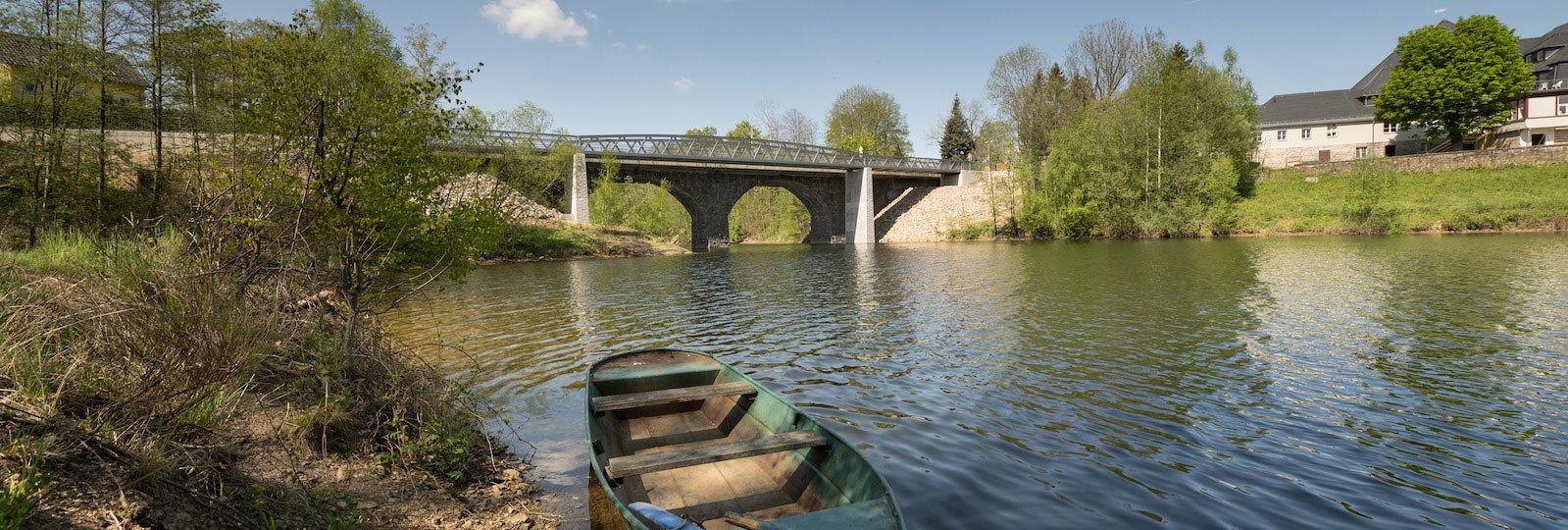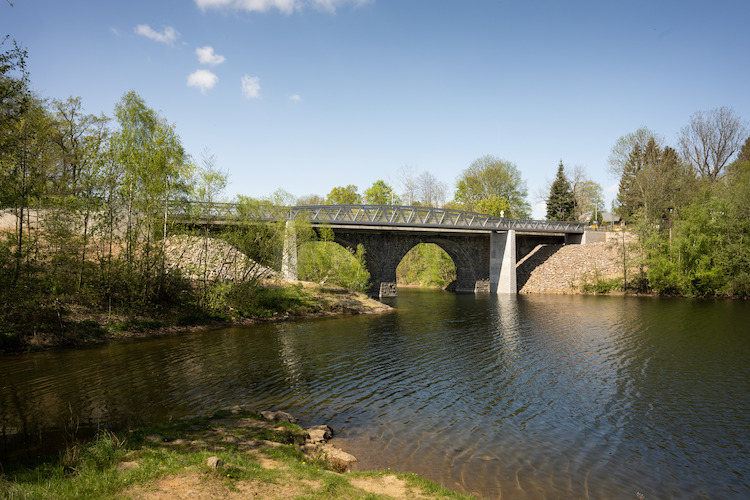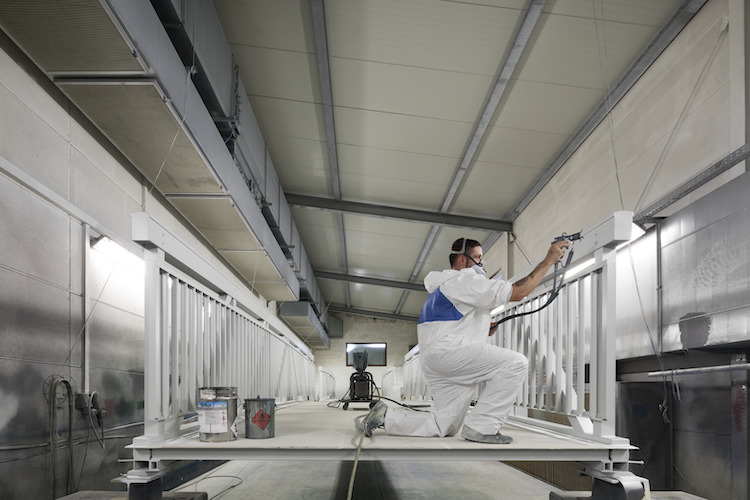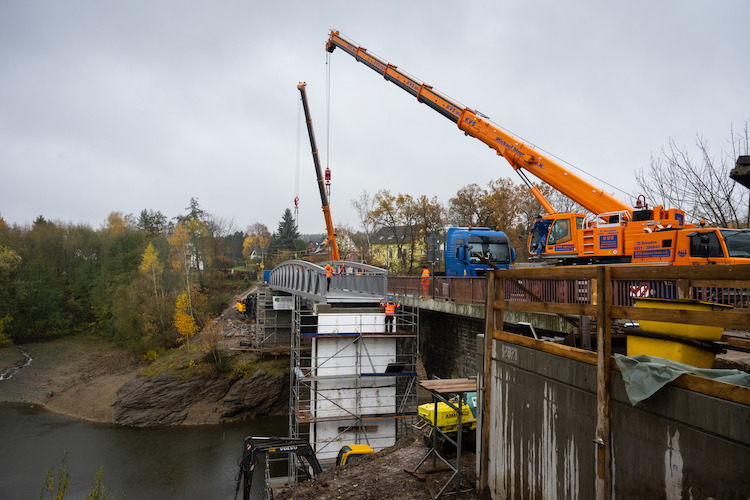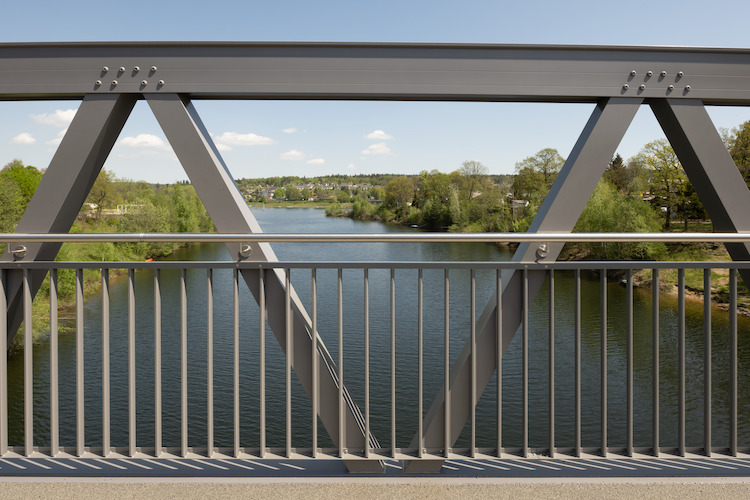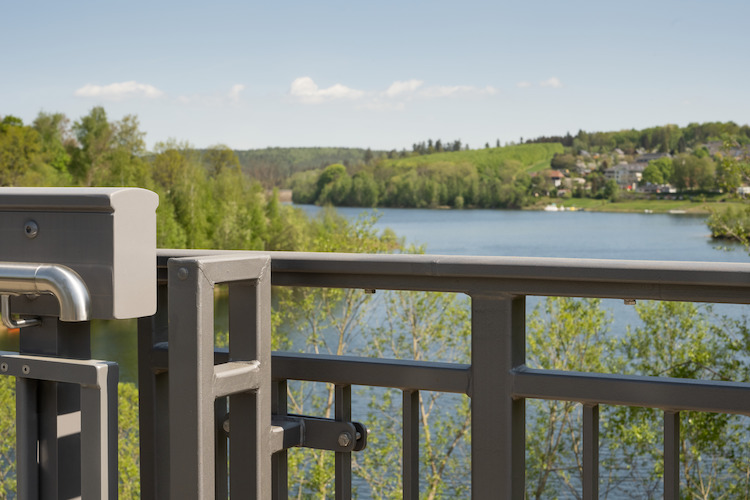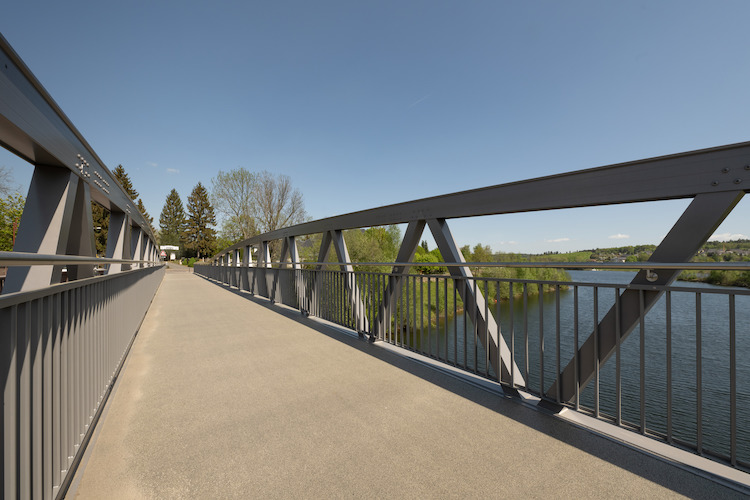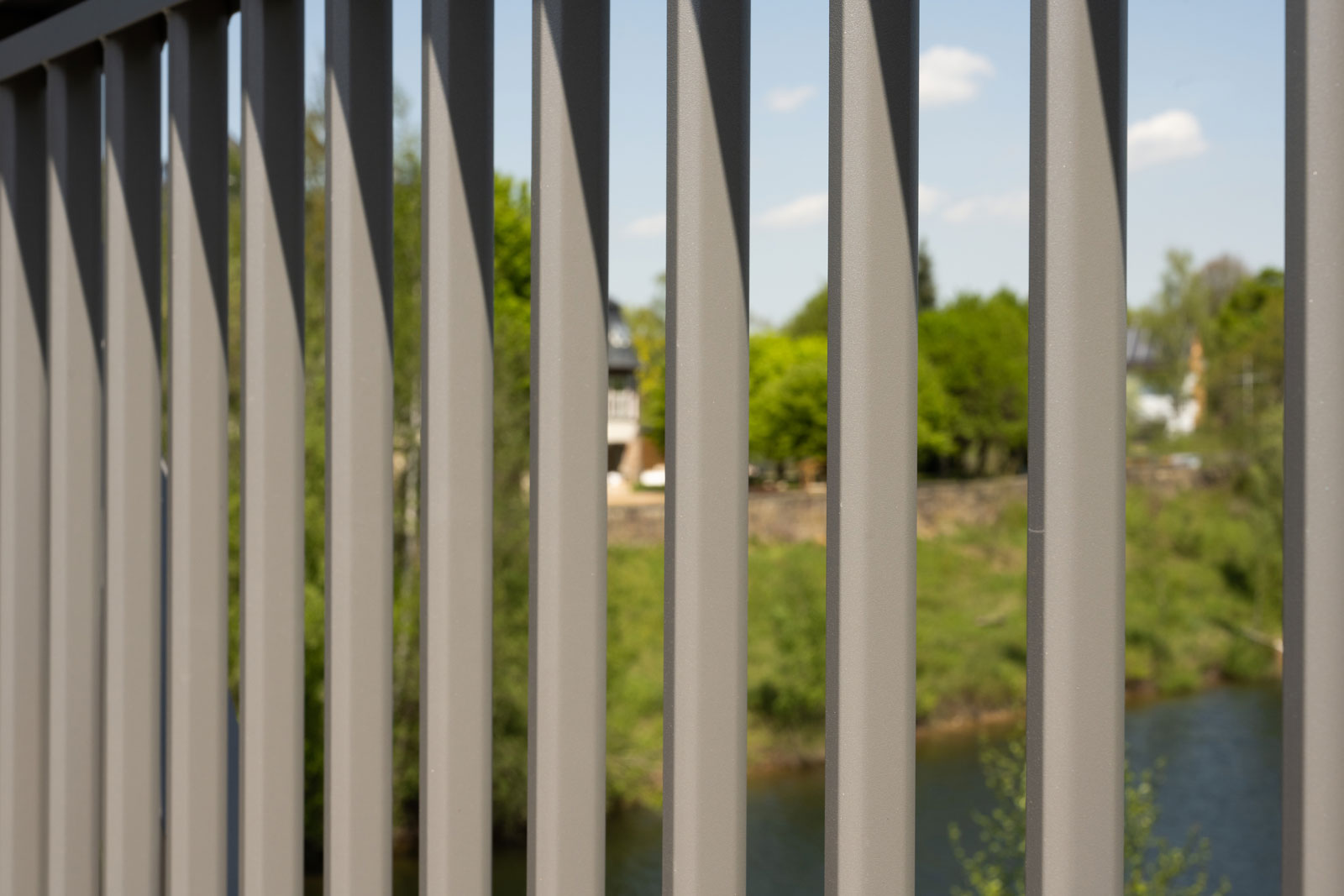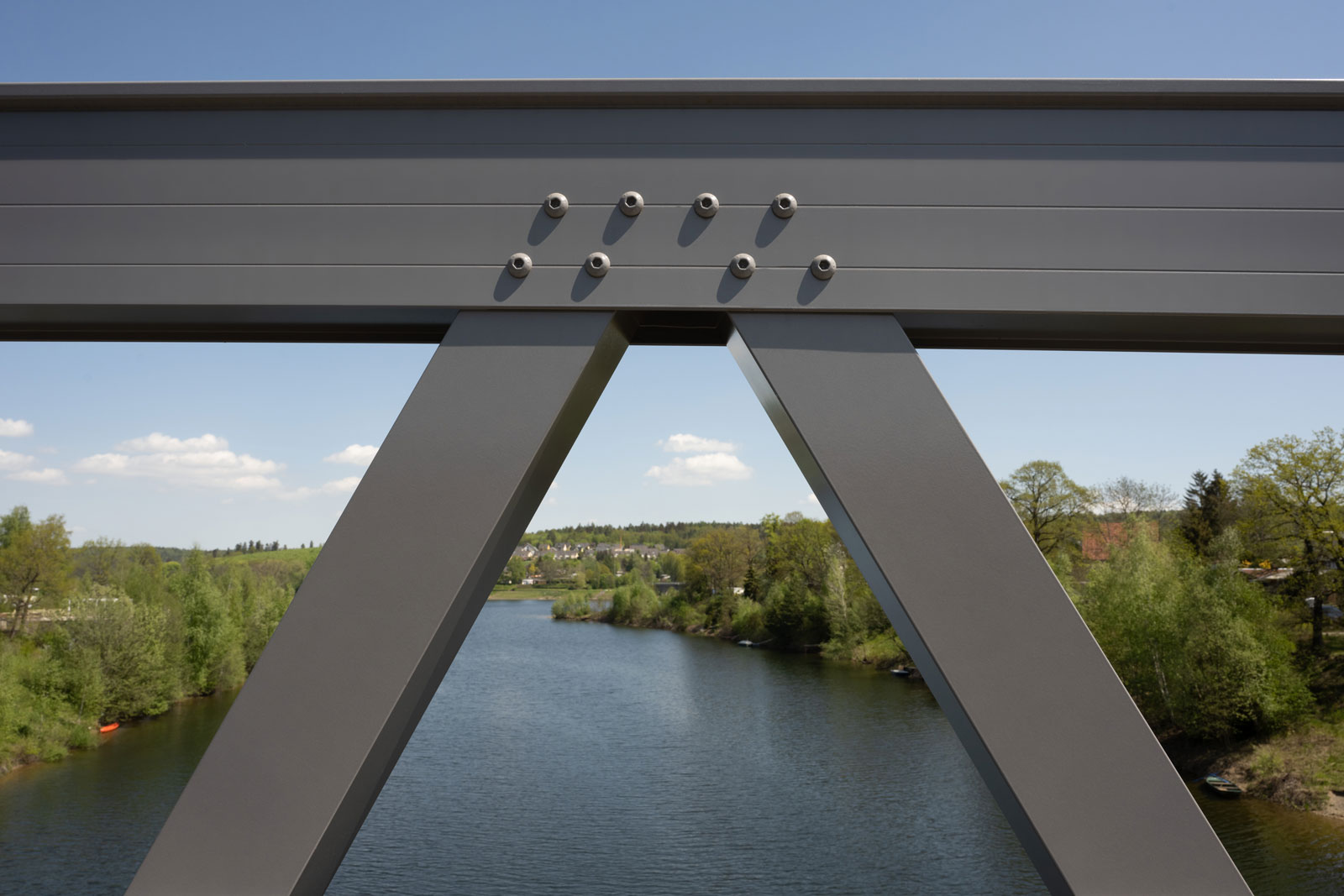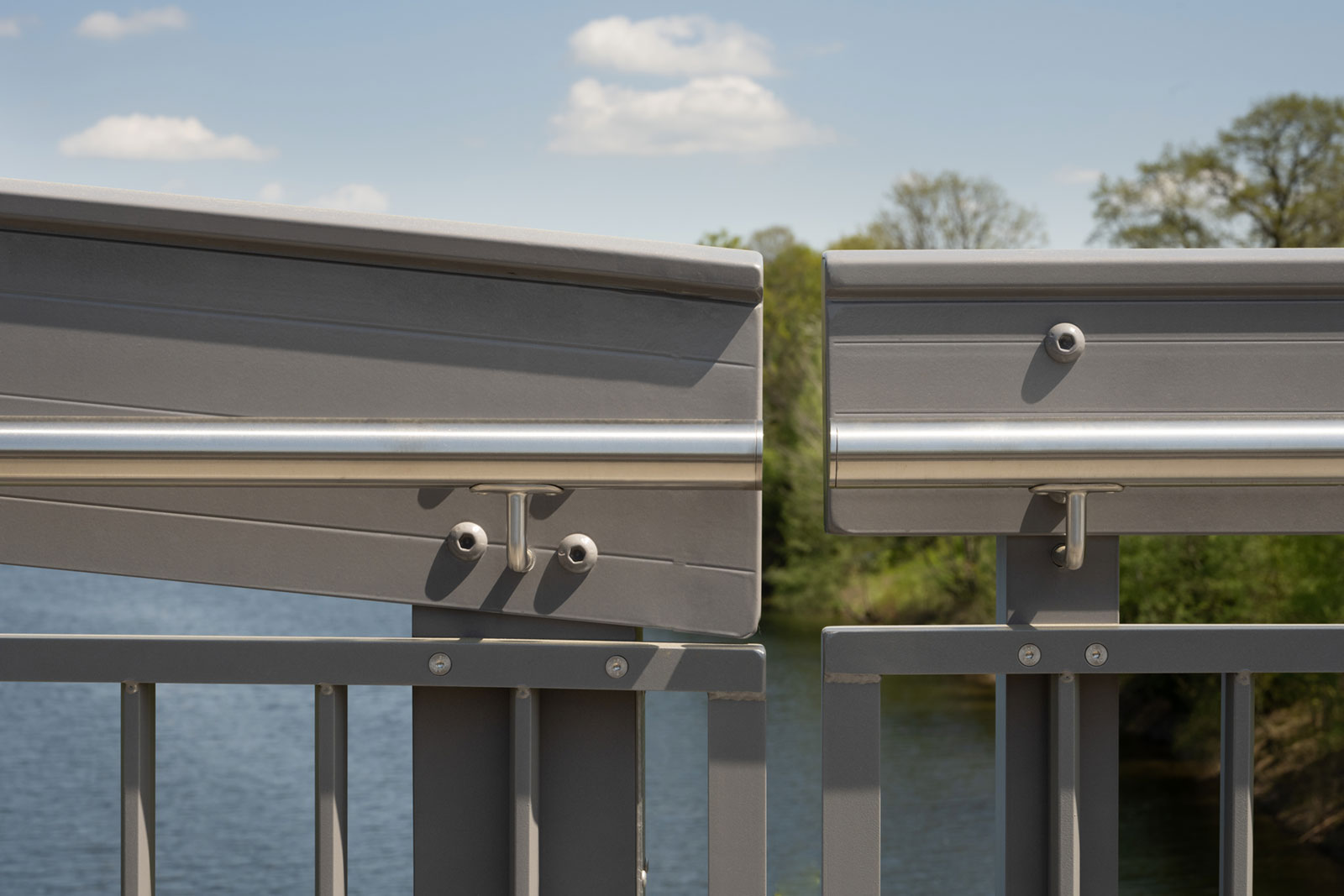Building a bridge dedicated to sustainability and low maintenance
Profile
Lämmergrund Bridge, 01744 Dippoldiswalde-Paulsdorf (pedestrian and cycling bridge)
Project owner: Pirna District Office - Sächsische Schweiz Osterzgebirge District, Office for Road Construction and Traffic
Total costs: 1.14 million euros
Cost of bridge incl. approach and erection: approx. 450,000 euros
Bridge design, manufacture and assembly: Glück GmbH, Engen
Structural analysis: Mäder Ingenieure, Engen
Brillux Industrial Coatings products: 2K-EP Adhesion Primer 5706, 2K-PUR Anti-Graffiti Paint 5749
Glück GmbH from Engen, Germany is a pioneer in aluminum bridge construction. Municipalities across Europe have already been impressed by the structural benefits a hundred times over. The manufacturer’s high standards for a durable and economical solution are evident right down to the coating details: Glück bridges are supplied with a sophisticated anti-graffiti protective finish using a wet paint process.
“Aluminum is a material I could rave about” says Werner Glück. Since founding his company Glück GmbH in Engen in 2002, the 73-year-old has not left it at enthusiasm, but built bridges out of it.
That is to be taken literally: 880 Glück bridges made of aluminum, until then a more-than-unusual material for this application, have been manufactured and assembled by the company to date. In a lot of Germany and Europe, they cross rivers and valleys as pedestrian and cycle path bridges.
One of these is the new pedestrian and cycle path bridge over the Lämmergrund in the Saxon resort of Paulsdorf, which was recently put into operation. The truss trough bridge weights 25 tons and has a total span of more than 69 meters. It is composed of three spans: the central section, the largest span, measures 36 meters in length. Like all bridges made by the Engen-based manufacturer, its construction is based on an aluminum profile technology developed by the company itself. Only one aspect of the bridge puzzles people: it doesn’t look like aluminum at all. The surfaces of the bridge's structural elements have a heavyweight iron mica appearance. Why is that?
Coating of bridges improves their appearance and protects them from vandalism.
“With aluminum, corrosion protection is not an issue. Nevertheless, we coat all our bridges in a two-coat wet paint process – for both a visual reason and a functional reason,” Werner Glück explains. The visual aspect is obvious: In contrast to the far more complicated anodizing process, the two-coat wet painting process allows for a much wider choice of colors. This argument pays off here for such a large building project, with a color that should fit into its surroundings. The functional aspect focuses on the bridge’s maintenance. Glück GmbH uses a product with anti-graffiti protection in the top coat. This helps local authorities to prevent the most common vandalism damage: with this coating technology, the unloved tagging then no longer needs to be expensively painted over or even disassembled at exorbitant costs, but rather can be simply wiped off at little to no expense.
Wet painting in one piece
Each of the three bridge segments for Paulsdorf was manually coated in the 56-meter-long painting hall in Engen using the Airmix process – another advantage over anodizing, where each component would have to be treated individually. “The maximum length of a bridge element is only limited by the size of our hall,” Werner Glück elaborates. Each Glück bridge is always an individually dimensioned one-off, which would make the use of a powder coating plant of little use. In Engen, the wet paint is applied in a two-coat system – primer and top coat – and requires one day per pass for application and drying. For the high coating quality required for bridge structures, Werner Glück has experimented with different wet paint systems. His conclusion: “Not every manufacturer is familiar with the coating of aluminum. In my experience, three factors are decisive. They are called substrate preparation, substrate preparation, substrate preparation,” emphasizes the 73-year-old. “This is where individual advice and technical tests are needed. This is precisely the service we received from Brillux Industrial Coatings, which is why we switched to a wet paint system from this manufacturer in 2016.”
Custom, verified coating process delivered an ideal outcome
Using original aluminum profiles from Glück, Brillux Industrial Coatings determined the ideal procedure for sanding, cleaning and degreasing the components as part of a technical consultation. A coating proposal was then drawn up and the surfaces were subjected to the salt spray test according to DIN EN ISO 9227 and the condensation water constant climate test according to DIN EN ISO 6270 for 720 hours. “The test results were flawless,” summarizes Holger Schroth. The technical consultant from Brillux Industrial Coatings regularly visits Engen and can be contacted personally for any questions.
Protection from graffiti becomes a pro-cost-saving factor
For wet painting, Glück GmbH only employs the high-solid Brillux Industrial Coatings paint primer 2K-EP Adhesion Primer 5706. This epoxy resin primer was created as the ideal adhesion booster for the system’s top coat of 2K-PUR Anti-Graffiti Paint 5749, which is also incredibly durable. 2K-PUR Anti-Graffiti Paint is available in an almost infinite variety of colors in the gloss levels high gloss and silk gloss. The anti-graffiti protective finish is based on a special enamel system with a non-stick effect: solvent-based paint – whether applied with permanent markers or sprayed – does not penetrate the coating but remains on the surface. “In fact, graffiti can be wiped off with a cloth and cleaning agent and doesn’t leave any residue – I’ve tried it myself,” confirms Werner Glück. As a result, his clients are spared the steep costs of fixing damaged bridges. Especially for public authorities whose buildings, street furniture or vehicles are particularly popular among graffiti artists, 2K-PUR Anti-Graffiti Paint opens up a large market with a lot of savings potential. “From switch cabinets to silos, from doors to garage doors, from vending machines to commercial vehicles, at-risk public surfaces benefit from an anti-graffiti protective coating,” says Holger Schroth. Brillux Industrial Coatings also offers anti-graffiti paints as powder coatings. Even with combined powder and wet paint finishes, there are no color deviations, as the manufacturer supplies both kinds of paint.
Light, easy to install and sustainable in the long term
The assembly of the pedestrian and cycle bridge in Paulsdorf was just as routine as the well-rehearsed coating process. Glück GmbH assembled the structure within one day. Aluminum bridges may be transported with smaller cranes and are much faster to install because of their weight reduction of 50% compared to steel bridges. The Pirna district office will benefit over time from the bridge’s 80 to 100-year lifespan, its ease of maintenance and its low maintenance costs. Even if it ever needs to be replaced, it will remain sustainable: its aluminum is completely recyclable. You can start to see why Werner Glück is so enthusiastic.
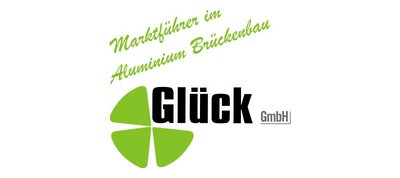
Glück GmbH
Glück specializes in the construction and coating of pedestrian and bicycle bridges made of aluminum. The company offers an all-round service: design, manufacturing, transport and assembly from a single source.
